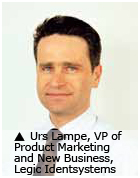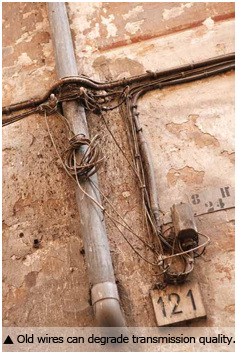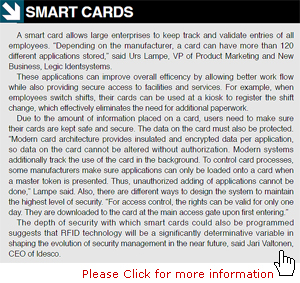In any installation, access control is the most basic form of keeping unwanted risks at bay. Aside from simply securing the premises, it also provides many applications that are valuable to operations and business efficiency. However, making sound integration and upgrade decisions are not easy tasks.
In any installation, access control is the most basic form of keeping unwanted risks at bay. Aside from simply securing the premises, it also provides many applications that are valuable to operations and business efficiency. However, making sound integration and upgrade decisions are not easy tasks.
The global access control market has been estimated by some at a value of just under US$2 billion. Globally, the market was definitely affected by the financial crisis, with an estimated decline of about 20 to 30 percent on a global basis, said Johan Lembre, CEO of Pacom Systems. “Upgrades and improvements were simply placed on hold for around 18 months due to the general reluctance to do any kind of investment that was not absolutely business-critical.”
According to market research, the EMEA and Asian markets for physical access control in 2010 are reportedly estimated to be more than $600 million each, said Philip Verner, Sales and Marketing Manager for CEM Systems (a Tyco International company).
The economic downturn may have not affected projects being completed now, but it will affect projects set to be completed in 2011 because the budgeting and planning were done during a time when money was tight, said Han-Kwang Chu, MD for Taiwan, Secom.
However, access control might have fared better than other areas. “Although there are fewer new systems being installed — due to the decline in new builds — people are hanging onto their technology for longer, thus creating a growth market in some of the lower-end of the service business through people expanding and updating their existing systems,” said Alistair Enser, MD of Security Products for the U.K., Siemens Building Technologies.
 The reason for the minimal decline of the market compared to other sectors, such as CCTV, is due to businesses understanding how access control systems help contribute toward other daily operations, such as attendance, central printing, building energy reduction and cashless vending. “This is an important point when referring back to the economy as this encourages other stakeholders within a business to become involved when upgrading an access control system,” Enser said. “The implication is that, in certain instances, the budget for access control is split among different departments and not just the security or IT department. If the capital risk is shared to increase the usefulness of the system, then the need for an access control system is validated and it could become self-funding.”
The reason for the minimal decline of the market compared to other sectors, such as CCTV, is due to businesses understanding how access control systems help contribute toward other daily operations, such as attendance, central printing, building energy reduction and cashless vending. “This is an important point when referring back to the economy as this encourages other stakeholders within a business to become involved when upgrading an access control system,” Enser said. “The implication is that, in certain instances, the budget for access control is split among different departments and not just the security or IT department. If the capital risk is shared to increase the usefulness of the system, then the need for an access control system is validated and it could become self-funding.”
Piecing Together the Puzzle
Although integration into, or adding onto, an existing system may save cabling costs, access control integrators face many challenges when integrating new technologies into older buildings. “In general, it's more convenient to perform a new installation and integration at a new site or building,” said Vincentius Liong, a veteran security system consultant. “Most existing old buildings do not separate the cabling trays and shafts for power and data. In a new building, there is a clear separation of cabling trays and shafts between high-tension power cabling and data cabling for data, video and voice.”
This prevents problems with radio frequency interference and/or electromagnetic interference, Liong continued. “Most new buildings have also considered aesthetics and have already taken into consideration how to run video, data and voice cable in accordance with building installation standards.”
 Upgrading an old building depends largely upon legacy systems. “Some older systems have a limitation in flexibility and scalability, such as a maximum 30-door system. If the customer wishes to expand beyond this threshold, they would need to replace the existing system.” Liong said. Some customers, who wish to keep their old, proprietary system for reasons such as not wishing to replace the access cards of thousands of employees, would upgrade the old system from the door controllers up to the management software, while keeping the card readers and access cards unchanged. “However, upgrading from a proprietary system from 20 years ago is difficult since most old systems are usually not expandable and only offer a one-card format — the 26-bit Wiegand. Most new systems offer a different card format, such as the 26-bit and 36-bit Wiegand, or an even better format that can be programmed by the desired management software.”
Upgrading an old building depends largely upon legacy systems. “Some older systems have a limitation in flexibility and scalability, such as a maximum 30-door system. If the customer wishes to expand beyond this threshold, they would need to replace the existing system.” Liong said. Some customers, who wish to keep their old, proprietary system for reasons such as not wishing to replace the access cards of thousands of employees, would upgrade the old system from the door controllers up to the management software, while keeping the card readers and access cards unchanged. “However, upgrading from a proprietary system from 20 years ago is difficult since most old systems are usually not expandable and only offer a one-card format — the 26-bit Wiegand. Most new systems offer a different card format, such as the 26-bit and 36-bit Wiegand, or an even better format that can be programmed by the desired management software.”
Sometimes, legacy systems require replacement due to the disintegrated quality of the wires. “If the wires are too old, it's best to remove and replace the whole system since old wires can degrade the transmission quality. If this cannot be done, they are left alone and new wires are placed in, regardless,” Chu said.
 Simply put, a new system installation would allow for better interoperability and scalability based on specific customer requirements and budgets. Older buildings and systems usually have less or poorer interoperability and scalability to meet the challenging and varying needs of customers, Liong said.
Simply put, a new system installation would allow for better interoperability and scalability based on specific customer requirements and budgets. Older buildings and systems usually have less or poorer interoperability and scalability to meet the challenging and varying needs of customers, Liong said.
To Go Wired or Wireless? The industry has taken a large turn toward IP, leading many to consider the pros and cons of both wired and wireless systems. “With a large number of access control devices sitting on the Ethernet, cabling has become less of an issue. Aesthetics and third-party integration is more of a consideration, particularly in new buildings, where performance and sympathetic design will always be required as much as possible,” Enser said.
 A wireless system offers a significant cost reduction against the fully wired system. “Wireless doors are only 50 percent of the cost of a wired door,” said David Rees, Regional Manager for APAC, Salto Systems. “The speed of data transmission from a stand-alone reader is still fast though, taking only 150 milliseconds to update information on the card at each access point.”
A wireless system offers a significant cost reduction against the fully wired system. “Wireless doors are only 50 percent of the cost of a wired door,” said David Rees, Regional Manager for APAC, Salto Systems. “The speed of data transmission from a stand-alone reader is still fast though, taking only 150 milliseconds to update information on the card at each access point.”
Faster frequencies help accelerate data transmission on wireless networks. “When deploying an RFID access control solution operating at 125 kilohertz, one must expect transaction speeds to be slower than in a system operating at 13.56 megahertz,” said Jari Valtonen, CEO of Idesco. “Faster transactions become essential when deploying more robust encryption schemes or when interrogating multipurpose smart cards,”
IT and security have become mutually defining factors as new requirements appear to be evolving IP's role in access control devices, Valtonen said. “Regardless of how a site chooses to implement a network for supporting security, IT will clearly play an increasingly critical role in future access control site design.”
Wireless access control will need time to mature since it still grapples with stability issues. “Wireless communication can be interfered by very high radio frequency,” said David Chen, Product Manager, Falco-Ecom. “This is not to say that cabled systems do not have any interference problems, but the chances are higher in wireless devices. If the wireless connection fails, then the entire system fails.”
Most buildings are steel-framed, making them not ideal for wireless transmission. “Electromagnetic interference from nearby devices and eddy waves from metal surfaces often compromise the read accuracy of RFID devices. To address this problem, shields and installation plates are developed to accompany readers and companies should make customers aware of this issue,” Valtonen said.
 To avoid wirelessly transmitting data over long distances, some systems rely on the data being transferred from one reader to the next using card technology. “These systems have their benefits, but they do rely on a flow of traffic around the building in order to transmit the information around the readers, so it is very possible for someone to be deleted from the system for a considerable time before the reader is updated with the new database information,” Enser said.
To avoid wirelessly transmitting data over long distances, some systems rely on the data being transferred from one reader to the next using card technology. “These systems have their benefits, but they do rely on a flow of traffic around the building in order to transmit the information around the readers, so it is very possible for someone to be deleted from the system for a considerable time before the reader is updated with the new database information,” Enser said.
Therefore, the wireless infrastructure running these critical functions must be thoughtfully planned and executed, and if done correctly, wireless transmission is not inferior to its wired counterpart. “It depends on the application — wired systems are generally more secure and robust than wireless but there is an opportunity cost,” Enser said. It would take some time for people to accept wireless systems in access controllers as many are still generating money from laying cables, Chen said. “Another disadvantage of wireless is its inability to integrate with video. Hardwiring has proven to be the best option for video integration with access controllers due to its stability and reliability.”
Also, most customers still prefer reliable, hardwired access control rather than wireless access control in their buildings, Liong said.
 Aside from the considerations above, the current trend has also moved onto PoE devices. “The biggest advantage offered by PoE infrastructure is the ability to offer system-wide power backup,” Chen said. “Employing an emergency generator or a UPS will ensure that the access control system continues to be fully functional during a power outage.”
Aside from the considerations above, the current trend has also moved onto PoE devices. “The biggest advantage offered by PoE infrastructure is the ability to offer system-wide power backup,” Chen said. “Employing an emergency generator or a UPS will ensure that the access control system continues to be fully functional during a power outage.”
However, data security should always be the main concern, and this needs to be emphasized when using PoE or wireless infrastructure. “Systems that have controllers at the edge and use PoE/wireless transmission are typically less secure as they open up many more possibilities for an attacker to get into the system,” said Daniel Ong, VP of Certis Technology International, Certis CISCO Security. “Systems that use proprietary protocols for communication to edge devices are more shielded once the main controllers are installed in a secure location.”
Transmission plays a large part in selecting and implementing the most suitable system for a project. Other integration concerns include deciding between analog and IP, and choosing the correct management software.